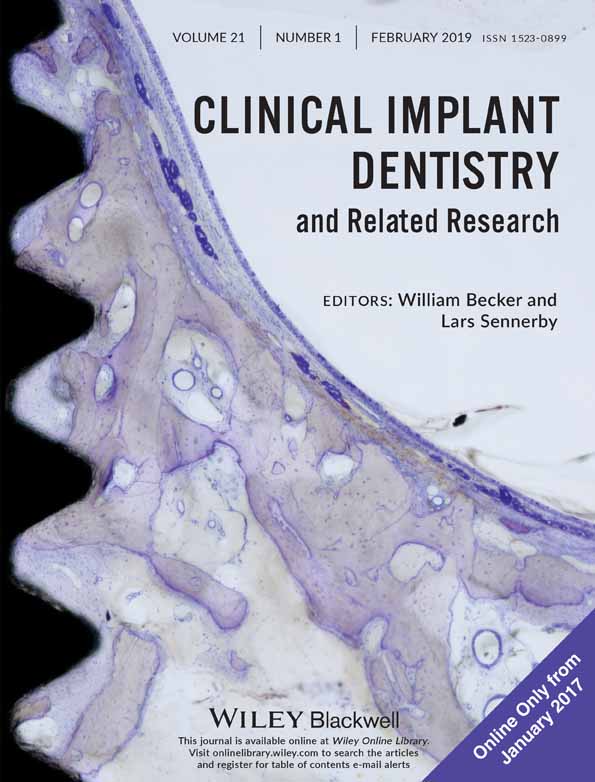Prospective randomized controlled clinical trial to compare hard tissue changes following socket preservation using alloplasts, xenografts vs no grafting: Clinical and histological findings
Funding information: Augma BioTec
Abstract
Purpose
To compare dimensional changes and bone quality of two different grafting materials used for socket preservation.
Materials and Methods
Thirty-three patients requiring extraction were recruited and randomly assigned to receive: biphasic calcium sulfate/ hydroxyapatite (BCS/HA); bovine derived xenograft (BDX) or no grafting (Control). Ridge width (at −3 and −6 mm) and vertical distance from a stent were measured at the time of extraction/grafting. Measurements were repeated at reentry and core biopsies were harvested.
Results
Baseline vertical distance for the BDX, C and BCS/HA groups were 7.45 ± 3.1, 7.69 ± 4.2, and 6.75 ± 3.5 mm, respectively (P = .830). Post-op, C group had greater vertical loss (1.71 ± 0.4 mm) compared to BCS/HA (0.65 ± 0.5) and BDX (0.25 ± 0.2 mm), P = .059. Mean baseline width at −3 mm was 8.69 ± 1.1 mm, 8.31 ± 1.4 mm, and 9.0 ± 1.1 mm, respectively (P = .509). Post-op, this width was reduced by 2.96 ± 0.3 mm (C), 1.56 ± 0.4 mm (BDX), and 0.5 ± 0.4 mm (BCS/HA), P = .001. Mean ridge width at −6 mm for the C (6.5 ± 1.7 mm) was significantly smaller than BCS/HA (7.95 ± 2.8 mm) and BDX (8.85 ± 1.9 mm), P = .043. Histologically, the BDX group had greater residual scaffold material and less vital bone compared to the BCS/HA group. Pain scores were relatively low for all groups.
Conclusions
BCS/HA may be used for socket preservation with similar or better results compared to BDX. The significance of greater residual scaffold found in the BDX group is yet to be determined.
CONFLICT OF INTEREST
The authors declare no conflict of interest.




